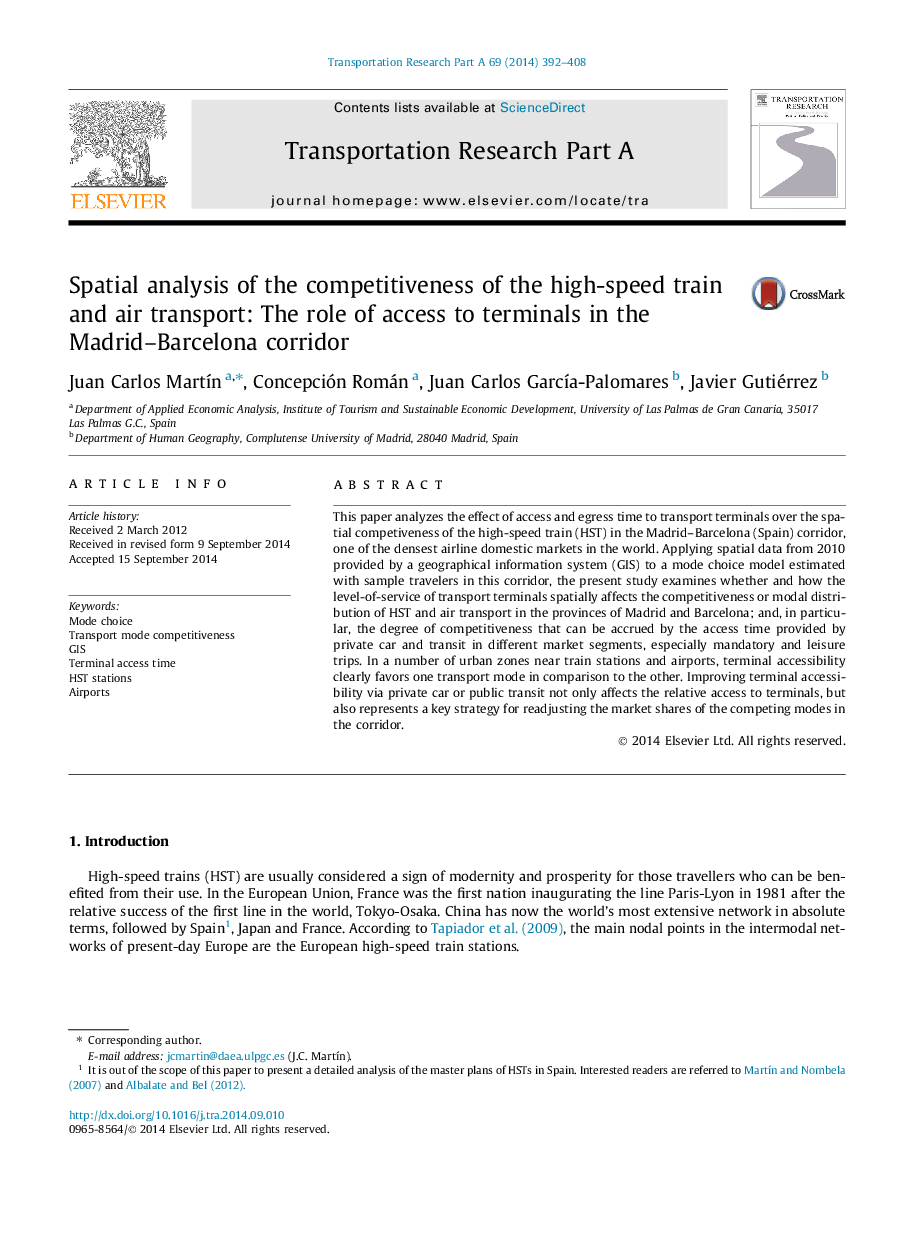| Article ID | Journal | Published Year | Pages | File Type |
|---|---|---|---|---|
| 6781579 | Transportation Research Part A: Policy and Practice | 2014 | 17 Pages |
Abstract
This paper analyzes the effect of access and egress time to transport terminals over the spatial competiveness of the high-speed train (HST) in the Madrid-Barcelona (Spain) corridor, one of the densest airline domestic markets in the world. Applying spatial data from 2010 provided by a geographical information system (GIS) to a mode choice model estimated with sample travelers in this corridor, the present study examines whether and how the level-of-service of transport terminals spatially affects the competitiveness or modal distribution of HST and air transport in the provinces of Madrid and Barcelona; and, in particular, the degree of competitiveness that can be accrued by the access time provided by private car and transit in different market segments, especially mandatory and leisure trips. In a number of urban zones near train stations and airports, terminal accessibility clearly favors one transport mode in comparison to the other. Improving terminal accessibility via private car or public transit not only affects the relative access to terminals, but also represents a key strategy for readjusting the market shares of the competing modes in the corridor.
Keywords
Related Topics
Physical Sciences and Engineering
Engineering
Civil and Structural Engineering
Authors
Juan Carlos MartÃn, Concepción Román, Juan Carlos GarcÃa-Palomares, Javier Gutiérrez,
